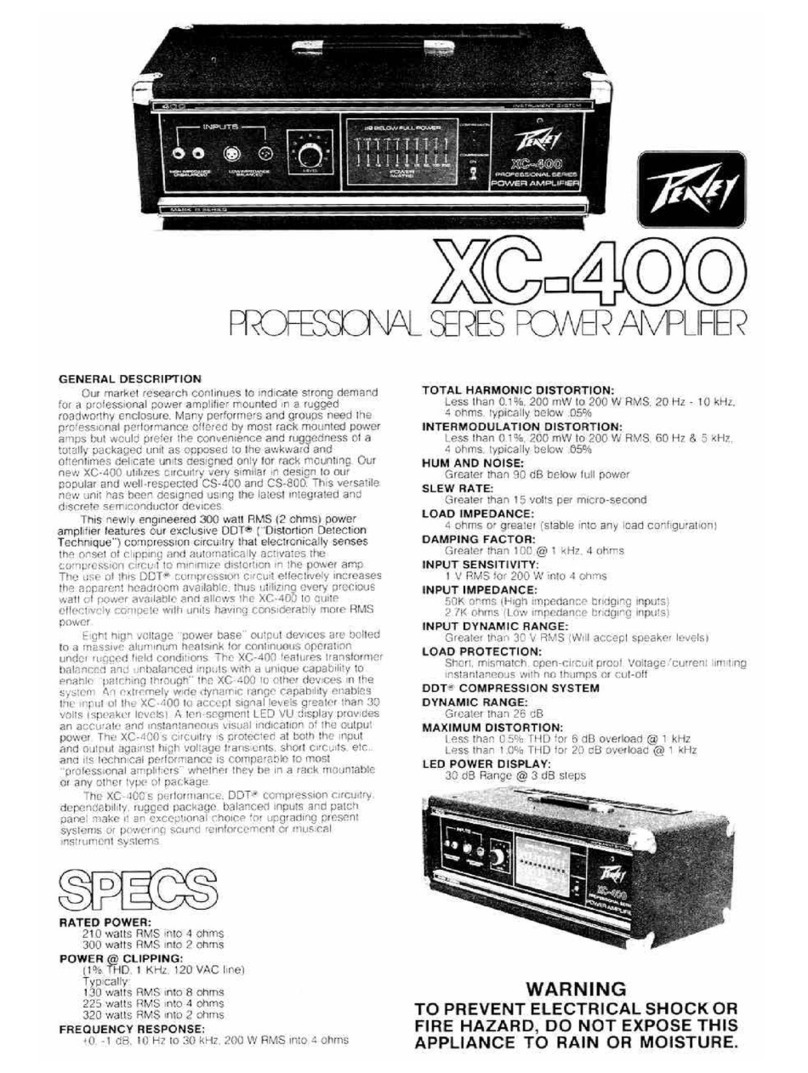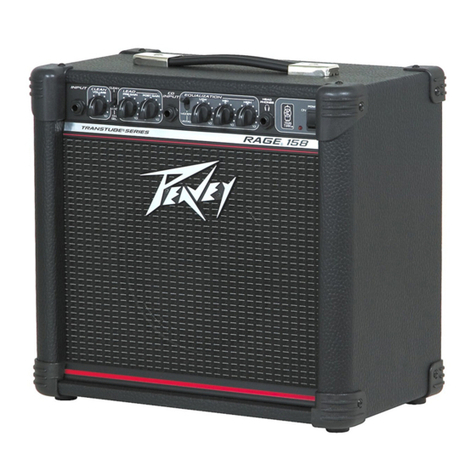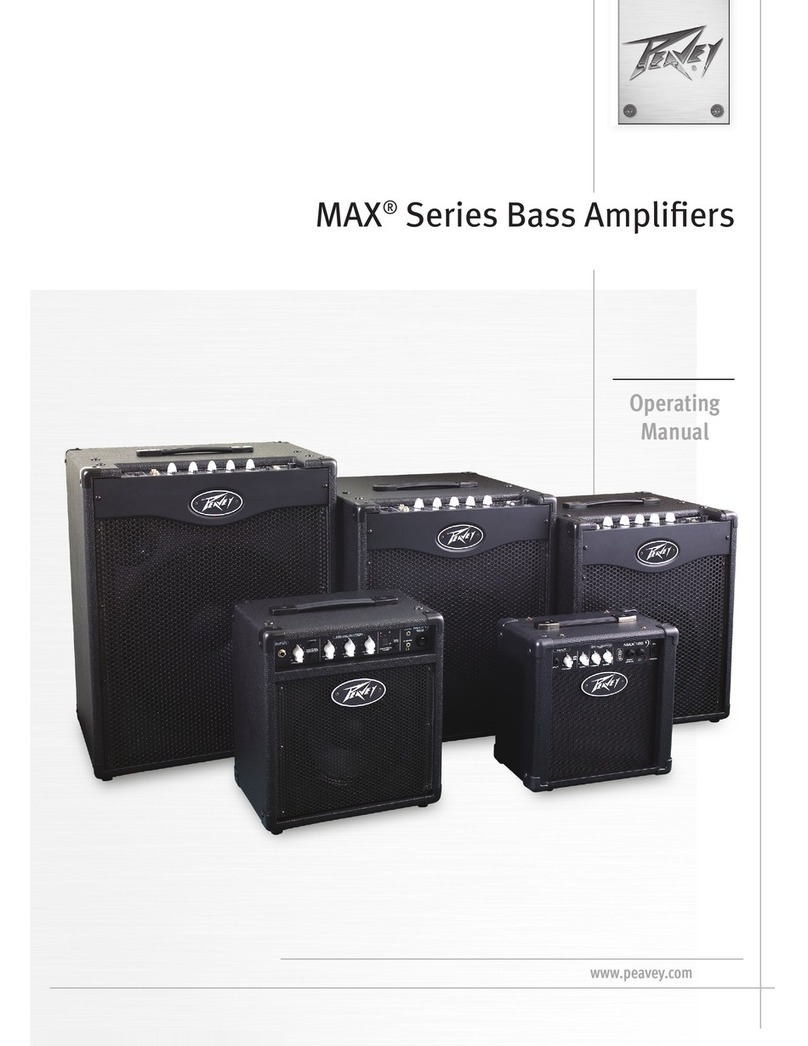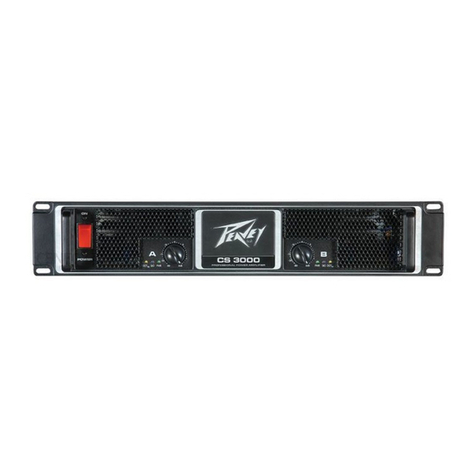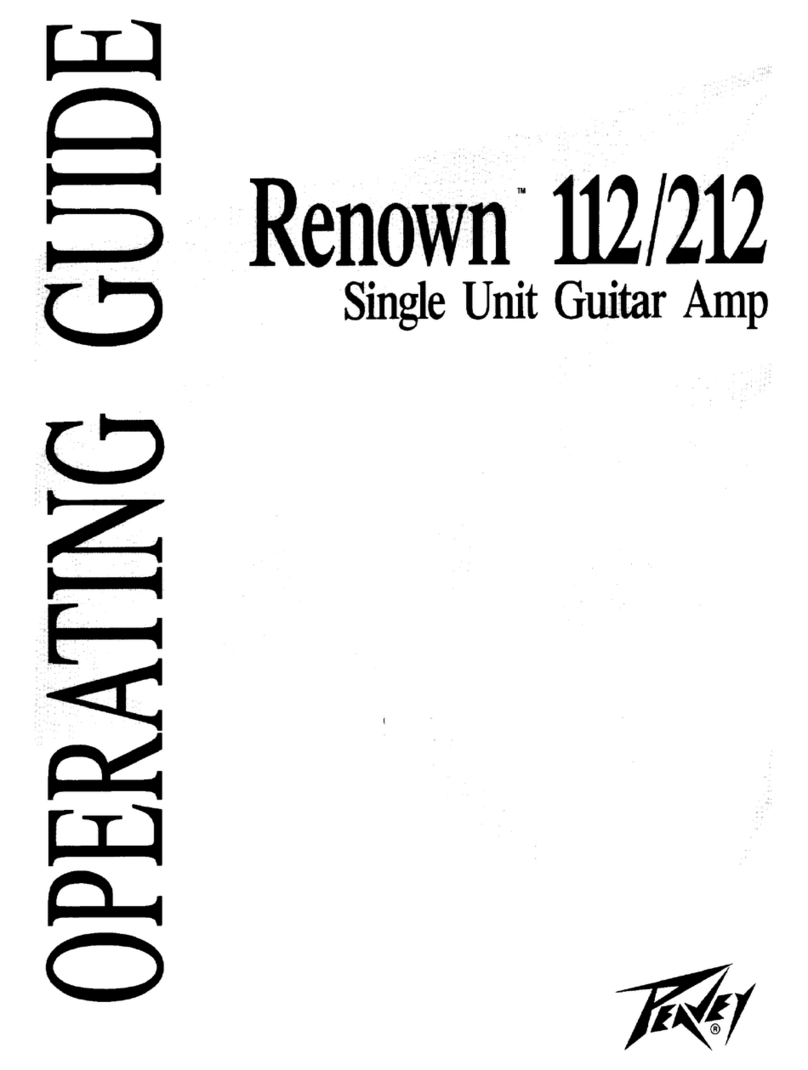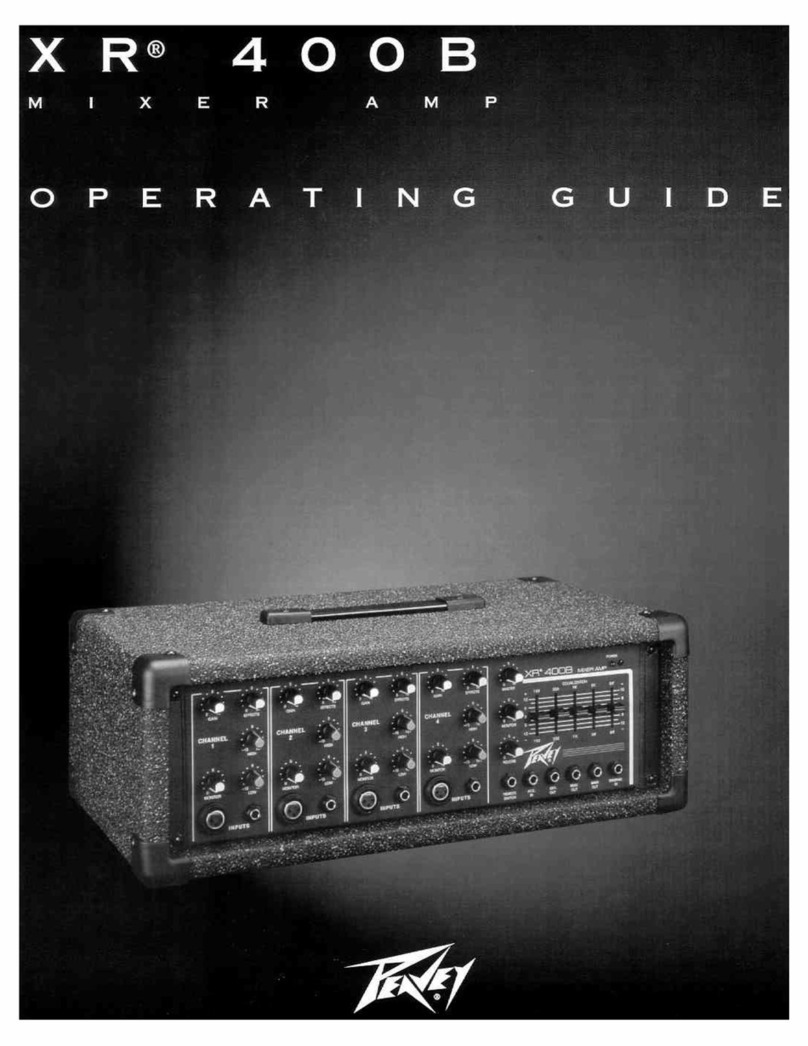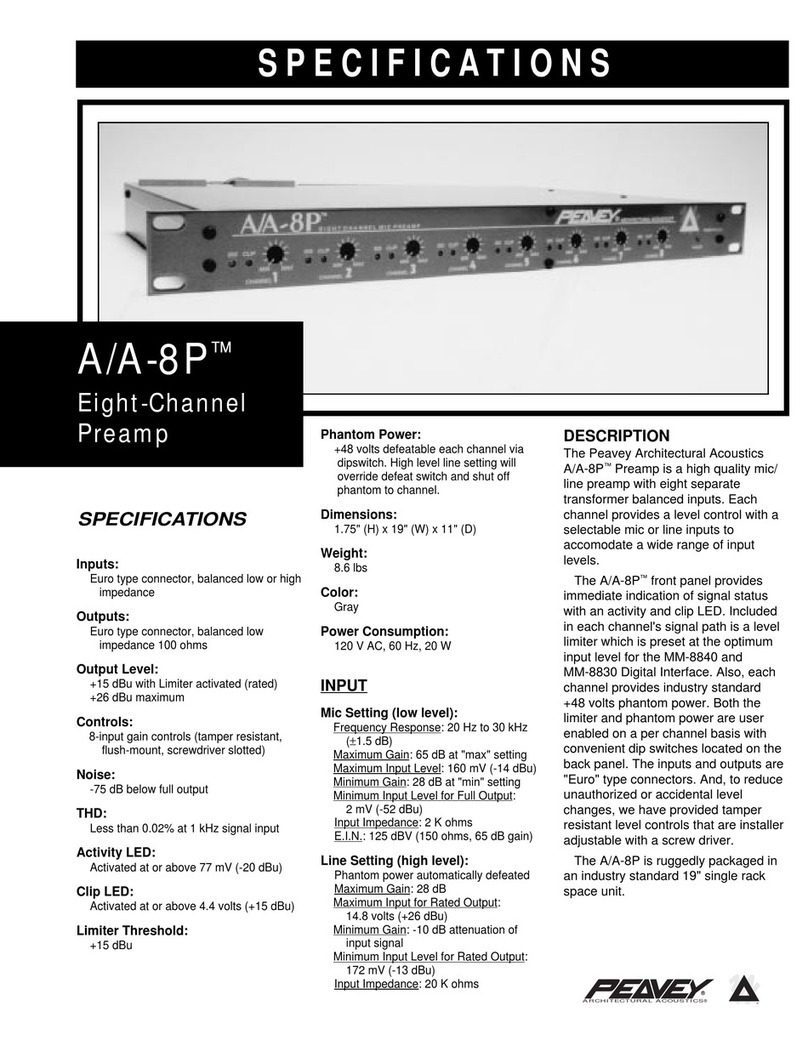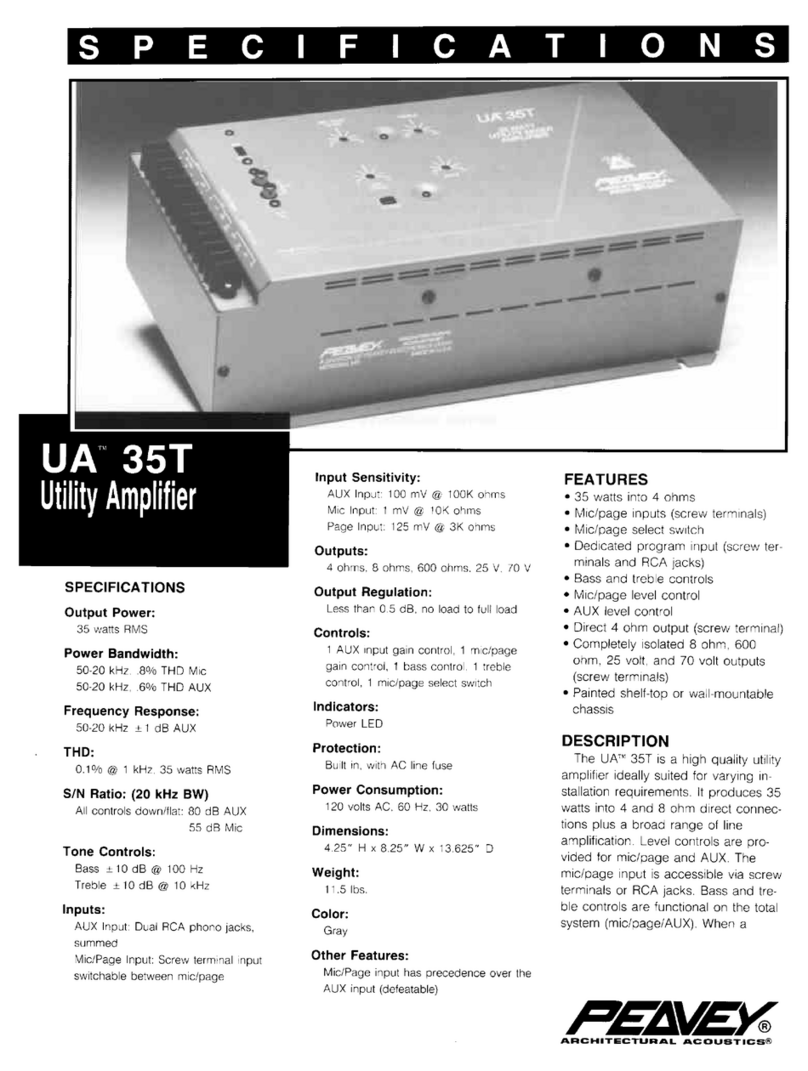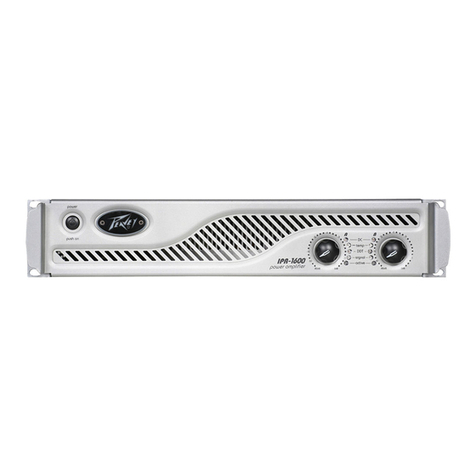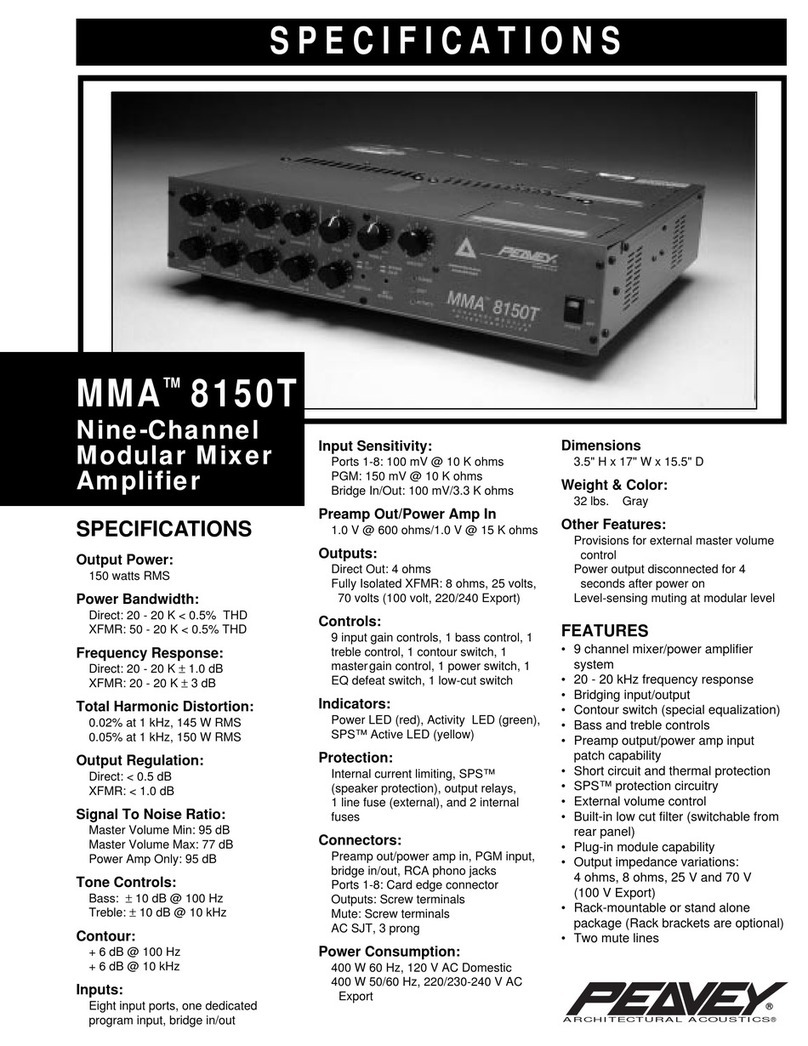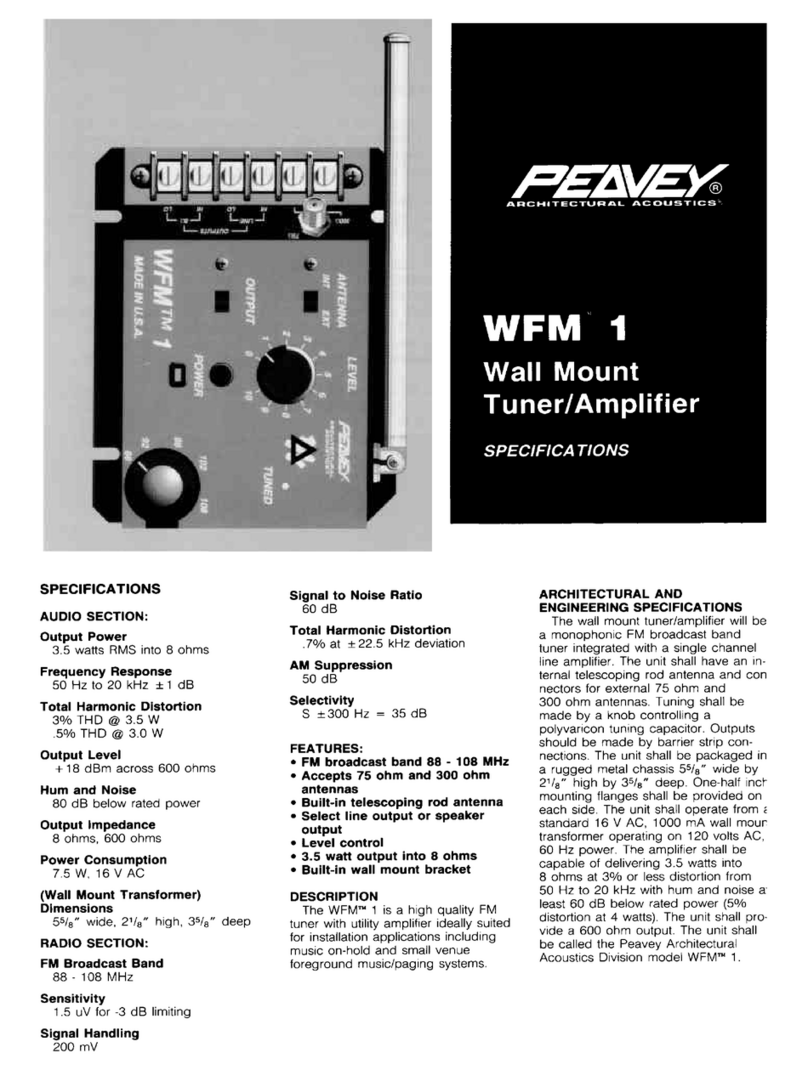Power Amplifier Section:
Tubes:
Four 6L6GCs with 12AX7 driver
Rated Power and Load:
120 W RMS into 16, 8, or 4 Ohms
Power @ Clipping:
(typically @ 5% THD, 1 kHz, 120 VAC line)
120 W RMS into 16, 8, or 4 Ohms
Frequency Response:
±3 dB 50 Hz to 20 kHz @ 90 W RMS into 8 Ohms
Hum and Noise:
Greater than 76 dB below rated power
Power Consumption:
Domestic: 400 W, 50/60 Hz, 120 VAC
Export: 400 W, 60 Hz, 220-230/240 VAC
Preamp Section:
Tubes:
Three 12AX7s
The following specs are measured @ 1 kHz with the controls
preset as follows:
Low and High EQ @ 10, Mid EQ @ 0
Ultra and Crunch Posts @ 10
Bottom, Body, and Hair EQ @ 5
Effects Send @ 0
Effects Return @ 10
Master Level @ 5
Nominal Levels are with Pre Gain @ 5
Minimum Levels are with Pre Gain @ 10
Clean Channel:
Nominal Input Level: -20 dBV, 100 mV RMS
Minimum Input Level: -30 dBV, 30 mV RMS
Maximum Input Level: 0 dBV, 1.0 mV RMS
Crunch Channel:
Nominal Input Level: -80 dBV, 0.1 mV RMS
Minimum Input Level: -90 dBV, 0.03 mV RMS
Ultra Channel:
Nominal Input Level: -80 dBV, 0.1 mV RMS
Minimum Input Level: -90 dBV, 0.03 mV RMS
Effects Send:
Load Impedance: 47 k Ohms or greater
Minimum Output: -10 dBV, 300 mV RMS
Maximum Output: 0 dBV, 1 V RMS
Effects Return:
Impedance: High-Z, 80 k Ohms
Minimum Input Sensitivity: -10 dBV, 300 mV RMS
Maximum Input Sensitivity: 0 dBV, 1 V RMS
Line Output:
Load Impedance: 47 k Ohms or greater
Adjustable Output: ±20 dBV, 0.1 V RMS-10 V RMS
Remote Footswitch:
Special 3-button unit with LED indicators (supplied)
System Hum and Noise @ Nominal Level:
(Clean channel, 20 Hz to 20 kHz unweighted)
Greater than 74 dB below rated power
(Special noise gate circuitry for Ultra & Crunch)
Equalization: (Clean channel only)
Custom Low, Mid, and High passive type EQ
Voicing: (Ultra and Crunch channels only)
Active Bottom, Body, and Hair (Edge) EQ
Boost/Cut ±12 dB
Dimensions and Weight:
11.0" (279 mm) H x 26.5" (673 mm) W x 11.0" (279 mm) D
52 lbs. (23.6 kg)
TRIPLE XXX SPECIFICATIONS
9
